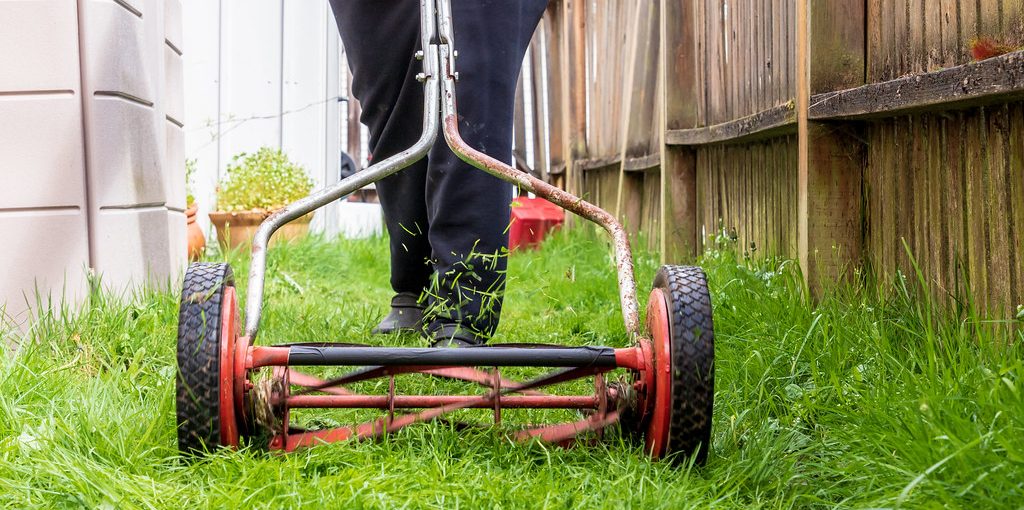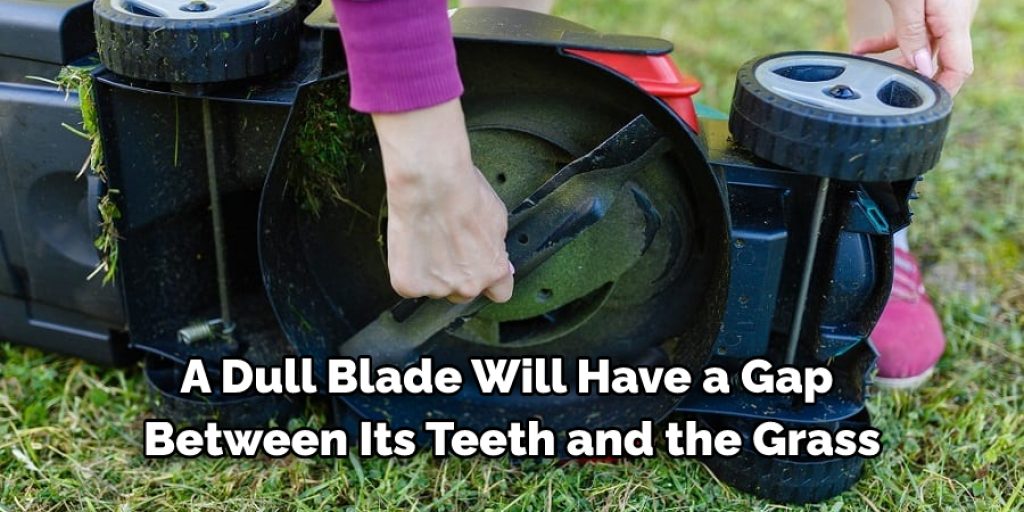How to Balance Lawn Mower Blades
Blades are one of the most essential parts of your lawnmower. It is essential to keep them sharp so they can cut through the grass without damaging it. Sharp blades also prevent clumping and scalping, which can lead to a lot of wasted time in your yard. In this blog post, we will walk you through how to balance lawn mower blades.
If your lawnmower blades are not in good condition, they will stop spinning efficiently, and you’ll be left with an uneven cut. Luckily, it’s easy to check the blade balance of your mower blades at home. You can do this by placing a straight edge on top of the blade. If one side is higher than the other, you’ll need to make adjustments. Read through this blog post to know more!

Why do You Need to Balance Lawn Mower Blades?
1. It cuts more even and gives a nicer looking lawn
2. Cutting blades can go out of balance because of normal wear and tear over time, causing uneven grass lengths in your yard
3. An unbalanced blade will shake, vibrate and make noise while cutting through grass
4. Over time, this vibration could damage the engine
5. A blade going out of balance will not cut evenly and can cause damage to the mower deck.
6. The deck is designed with a certain number of holes in it for weight balance purposes; if one side becomes heavier than another because there is an unbalanced blade, that could cause the front end of the mower to rise, which can lead to other problems.
7. An unbalanced blade could cause tire tracks on your lawn.
8. The noise created by an unbalanced blade is often loud and annoying!
9. Lawnmower companies building today’s quality machines usually balance their blades before installation, but you will need to balance the blades yourself if they do not.
10. A unbalanced blade will wear your lawnmower out much quicker and could even damage the engine.
Steps to Follow: How to Balance Lawn Mower Blades

Here are some steps on how to balance lawn mower blades:
Step 1: Prepare Your Workspace.
To get a nice, even cut on your lawn, be sure to have a clear, well-lit workspace. It’s often easiest to balance blades outdoors, so you’ll need a flat surface and good lighting to see the edge as you work. Also, keep in mind the ideal weight ranges for each cutting blade size.
Step 2: Check Your Blade’s Weight.
First, determine whether your blade is light or heavy by comparing it to other blades you have available. Weighing them on a scale will give you the most accurate number, but if that’s not possible, you can compare one blade’s weight to another.
Step 3: Remove Your Blade.
If your lawnmower blade is heavier than another blade you have available, like one from a different type of cutting equipment, place it on the ground and stand on it with both feet until you feel resistance; then lift yourself off. When taking the weight measurement of your blade, wear boots or shoes with soles about an inch thick to get the most accurate feeling for the weight.
Step 4: Check Your Blade’s Balance.
If your blade is still off-balance, use the following method to check its balance. First, find an object about 16 inches in length (like a broom handle or long screwdriver) and place it across the spinning blade with one end balancing on each cutting edge of the blade. Then, when you place the object across the width of the blade, it should balance perfectly.
If the blade is lighter on one side, use an adjustable wrench to loosen the bolt that holds the mower’s blade on. You can then place small washers (a quarter of an inch thick) over the opposite end of the bolt and tighten it back down to make up for some of the mower blade’s imbalance.
Step 5: Remove Dust and Debris.
Before continuing, remove any dust or debris that may be on the blade or surrounding area. This will prevent you from accidentally scratching your blade while you work to balance it. A compressed air canister is the safest way to remove this type of debris, but if an air compressor or canned air is not available, use a small paintbrush to clean off the trash.
Step 6: Measure Your Blade’s Length.
The next step is to measure the length of your blade with a measuring tape or ruler. If you have two blades available, compare their lengths by holding one up against the other lengthwise so that they are both touching each other. The blade that touches the ground first is the longer blade.
Step 7: Inspect the Mower’s Blades.
Now, check your mower’s blades to see if they are not bent or damaged in any way. If you find a warped blade, you will be unable to balance it and will need to replace the entire set of blades. Bent blades can be straightened carefully with a hammer and a block of wood.
Step 8: Use a File to Remove Metal.
If you find that one of your mower blades is shorter than the other, you can remove the shorter blade and place it on a flat surface. Then, use a metal file to remove some of the excess weight from the short edge of the blade so that both blades are equal in importance.
Step 9: Prepare to Sharpen the Blade.
It’s a good idea to use a file to sharpen the blade before proceeding. Some experts recommend using a metal file, while others prefer an electric grinder or bench grinder with a sharpening wheel. It all depends on your comfort level and what type of equipment you have available. Many people begin by filing the blade’s cutting edge with a metal file before using their sharpening device.
Step 10: Reinstall the Blade.
Once you’ve sharpened your blade, replace it on the mower by turning it over so that the sharp edge faces downward. Then use an adjustable wrench or pliers to tighten the bolt that holds the blade in place properly.
Step 11: Adjust the Blade’s Angle.
If your mower blade is not balanced properly, you will need to adjust its angle. If you have a lawnmower with adjustable blades, simply turn the bolt holding the blade in place so that it raises or lowers as needed for balance. If you do not have an adjustable blade and still see an imbalance, you will need to replace the blade with one that is balanced.
Step 12: Test Your Blade.
After balancing your mower blade, you will need to test the lawnmower for any vibrations or other problems that may indicate an imbalance. Then, simply run your lawnmower at idle speed for 30 seconds and check the underside of the deck to ensure there is no major cause for concern.
Precautions and Safety Measures:
1. Be careful of the sharp edges of the blade.
2. Always wear safety glasses and gloves when working with a lawnmower.
3. Also, wear long clothing that can protect you from any debris on the lawnmower.
4. Keep children and pets away from the work area.
5. Keep a fire extinguisher nearby just in case of an emergency or unexpected mishap.
6. Have someone stand nearby to monitor your actions, the blade’s condition, and to be a witness in case of an emergency.
7. Keep the lawnmower blade facing downward when attempting to balance it.
8. Be aware that there may be hazardous fumes from the sharpening process and hazardous materials from small metal shavings or dust particles if you have allergies or sensitivities.
Tips to Maintain Your Lawn Mower Blade:
1. Make sure your lawnmower blade is sharp at all times.
2. If the blade of your lawnmower is bent, replace it.
3. If you can’t seem to get a straight cut on your lawn, use a file to sharpen the blade.
4. Follow safety regulations when using a grinder or file that might produce sparks.
5. Keep in mind that sharp blades will not stay in balance for long.
6. Use a machine to balance your lawnmower blades.
How Do I Know if My Lawnmower Blade Is Sharp?

A sharp blade will cut a thick, healthy swath of grass. Dull blades tear and rip at the grass instead. If your lawn is hard to start or uneven, you’re probably using a dull blade. Dull blades can also cause problems like brown spots, not to mention they make the lawn look ugly.
If your mower blade is dull, it won’t cut the grass cleanly and will tear at it instead. Also, dull blades are often crowned, which means that one side wears out faster than the other, creating a bump or crown that lifts part of the mower deck.
Conclusion:
It is essential to have your lawnmower blades sharpened each year so they cut cleanly and evenly. Sharpening the blade will also help prevent a buildup of grass clippings on either side of the blade, leading to uneven wear on the wheels, tires, and drive gear.
If you are unsure of how to balance lawn mower blades, or if your blades have been damaged and need replacement, here we have given a quick guide on how to best do it. If you need any further assistance balancing or sharpening your blades, then contact us today!




